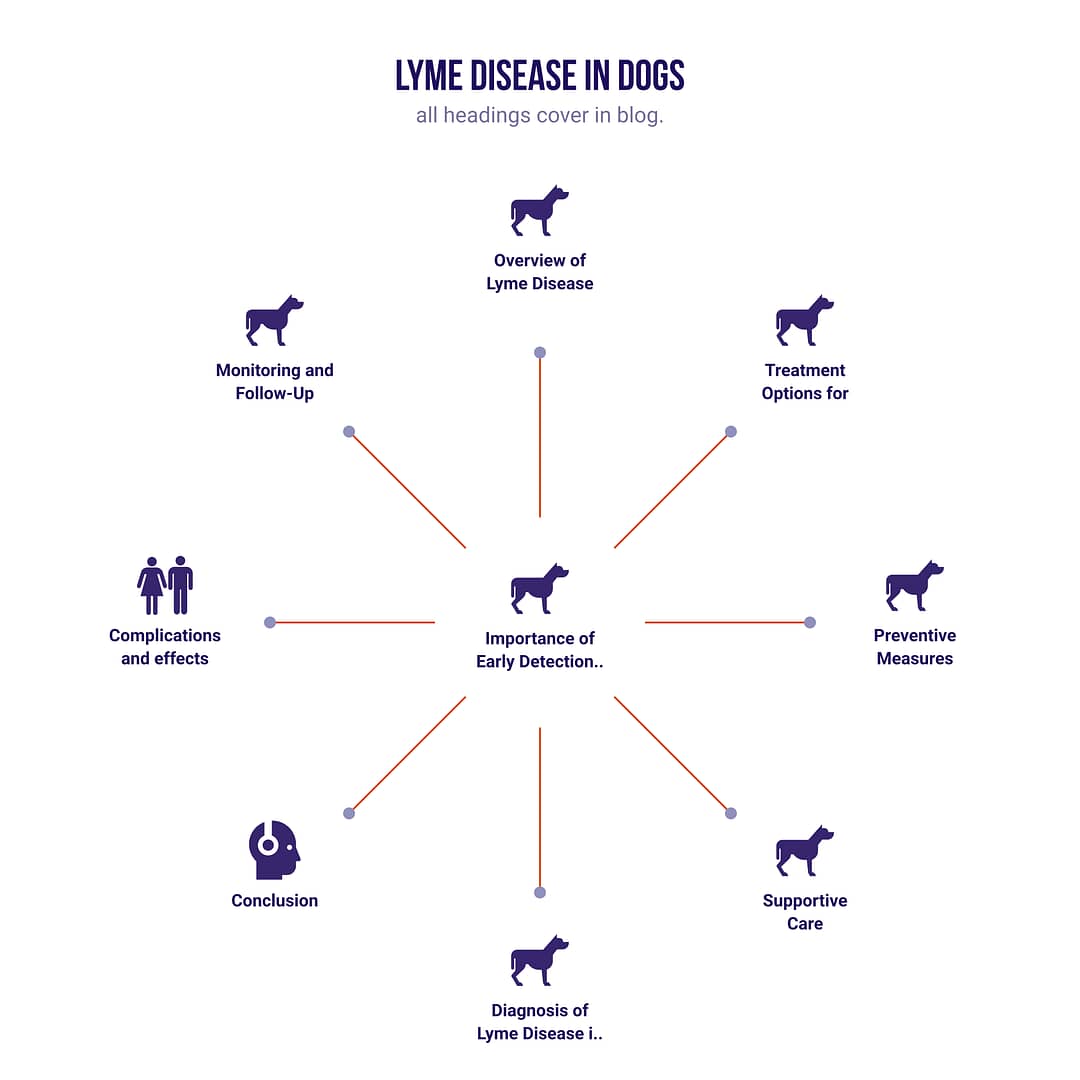What is Lyme Disease?
Lyme disease is caused by bacterial infections (bacterium Borrelia), transmitted by black-legged tick bites, commonly known as deer ticks. Ticks are born in warmer climates. Dogs may contract Lyme disease when an infected combines with them and feeds on their blood, and the bacteria attack the joints, heart, brain, and spinal cord. Some infected dogs exhibit no evident symptoms, while others become very ill; it all depends on your dog’s immunity.
dog Lyme disease Symptoms:-
Symptoms often show after 3-5 months:
- Difficulty breathing.
- Swollen lymph Nodes
- Lameness or limping
- Loss of Appetite
- Lethargy
- Fever
- stiffness
Diagnosis of Lyme disease:
- Veterinarians can diagnose this illness through history, such as in which location the dog is present or where your dog has gone for an outing.
- It can be identified with a blood test that detects antibodies against Borrelia burgdorferi, the bacteria that causes Lyme disease. A positive test might be the explanation owing to Lyme disease, however a dog can possess antibodies without being infected.
- If the kidney’s function is suspected owing to severe symptoms such as frequent urination or abnormal blood work, another test for other renal functions may be performed.
- PCR (Polymerase Chain Reaction) can aid in confirming the Lyme disease. It can identify the presence of Borrelia Burgdorferi DNA in blood or joint fluid.
- X-rays can reveal irregularities in joints, perhaps indicating Lyme disease.
Treatment:
Veterinarians may provide an initial course of antibiotics, such as doxycycline. discomfort medication may also be used to relieve joint discomfort, and routine examinations are crucial for monitoring conditions including stiffness, joint pain, and urine production.
In patients with severe kidney damage, hospitalization is required for IV fluids among other things.
Transmission:
Lyme disease cannot be transmitted directly from dogs, but it can be transmitted to humans via deer ticks.
When you and your dog return from a location where ticks are present, make sure to thoroughly inspect your and your dog’s bodies.
Prevention:
Pets can benefit from topical treatments, oral drugs, or tick collars that help eliminate ticks before they can spread the Lyme disease virus.
Tick Inspections: After bringing your dogs inside, check them for ticks.
Human Tick Repellents: Apply permethrin or deet-containing insect repellents on exposed skin.
Verify the bodies: Check bodies after you return from the outside. etc.
You should contact your veterinarian as soon as you see any signs of Lyme disease in your pets.
Note: The advice on this page is meant for informative purposes only and does not represent medical advice for dogs. Please schedule an appointment with your veterinarian to ensure that your pet’s ailment is accurately diagnosed.
